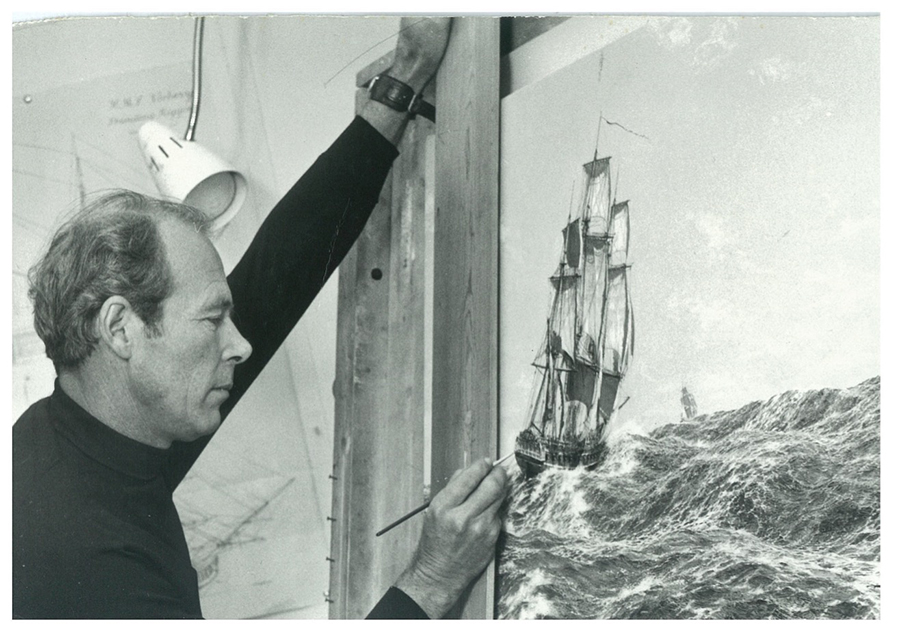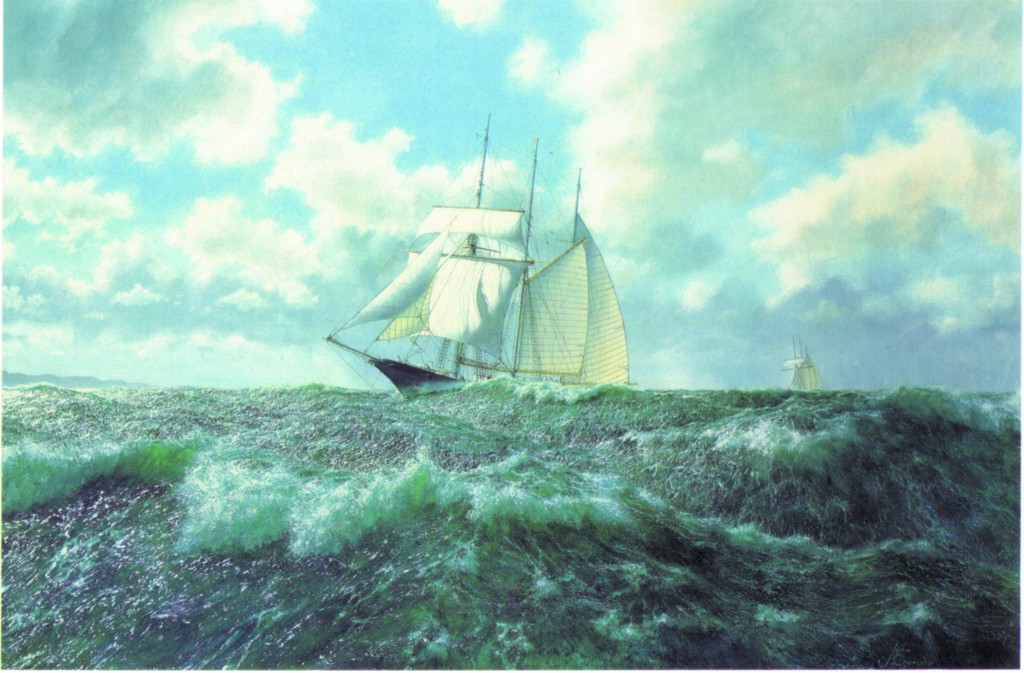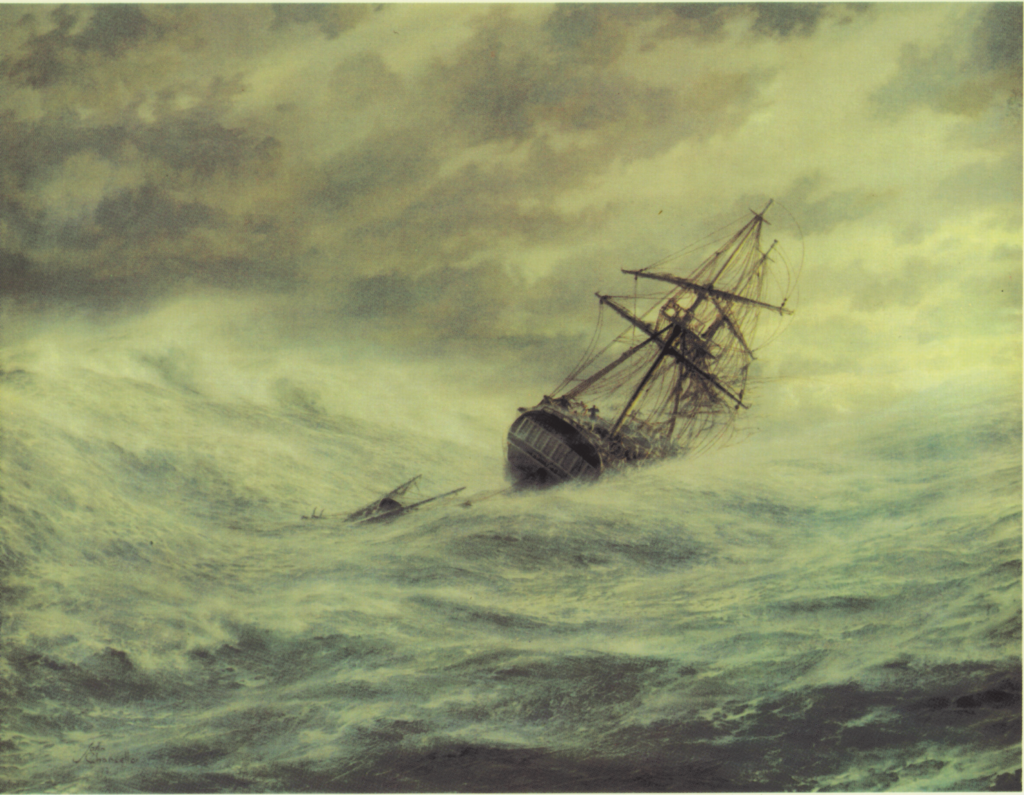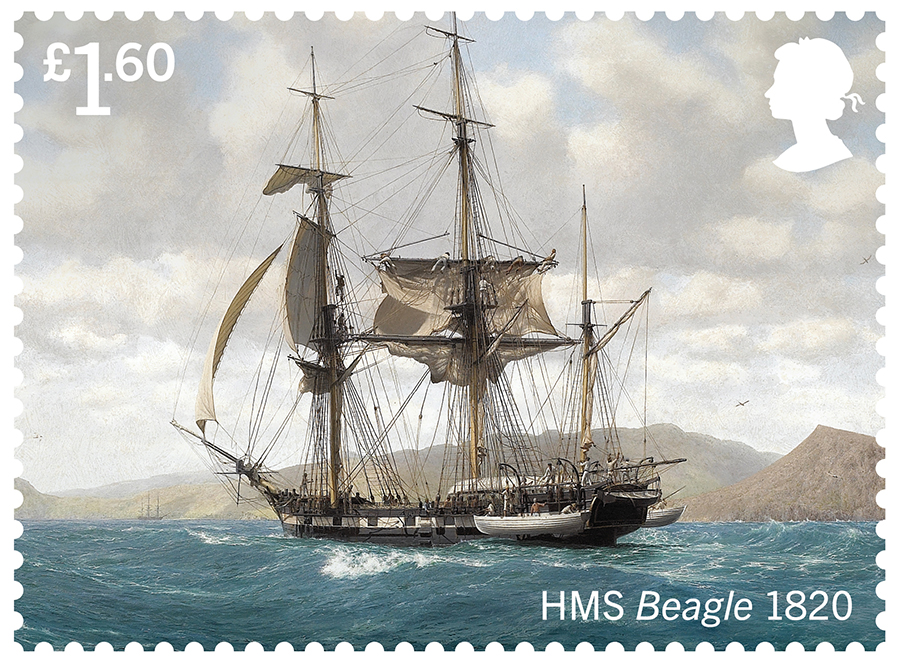
John Chancellor (1925 – 1984)
About the Artist
“Despite his extraordinary artistic talent, Chancellor always regarded himself as a seaman first … and an artist second.”
By the time of his untimely he died in 1984, John Chancellor had been painting full-time for only fourteen years. He had completed seventy oils and a similar number of watercolours and one might think this was insufficient number to establish him as one of our great sea painters.
But quality rather than quantity has proved otherwise and John Chancellor is now recognised as a major talent. The publication of two superbly illustrated books by David & Charles and around 25 limited edition prints, have added to the ever increasing circle of enthusiastic Chancellor collectors.
Many are professional or amateur sea-goers who have no difficulty in identifying the special details which reveal that the paintings can only be the work of a fellow seaman. Others who have never been to sea can discern that here was a man who knew his subject intimately and painted it with passion.
Born in Portugal the son of a British Anglo-Latin Lawyer, John’s earliest memory was seeing the ‘Grand Bankers’ setting off for the Newfoundland and Greenland fishing banks. He showed a remarkable talent for drawing as a child and spent a brief period in his adult life as a commercial artist.
When war broke out John joined the merchant navy, aged 16, and survived two torpedo attacks. Later, in peacetime, he served on deep sea tankers; was Master of coastal barges; owned his own fishing trawler and then developed an innovative hydrographical survey boat, ‘Exact’, converted from a fishing boat. In 1970, still chartering ‘Exact’ with himself as coxswain, John painted between commissions and it was during this time he created the oil painting of the sail training ship Sir Winston Churchill, with Malcolm Miller also featured. The immediate interest in this painting and the enthusiastic commitment of Triton Gallery in Torquay, Devon, persuaded him to give up the sea and develop his talents as a full-time artist.

John Chancellor’s paintings are widely acknowledged as being ‘so detailed and accurate they are without doubt historic documents in their own right’. Despite his detailed accuracy in the portrayal of sailing craft, John’s paintings are much more than mere illustration. From the awesome power of the elements in ‘Perfect Hurricane’ to the delicate wistful atmosphere of ‘Day of the Men’, John treats us to a masterful seaman’s eye view of the sea and ships and takes us far beyond the merely photographic.

A Perfect Hurricane
John often commented on the contrast between the tight, detailed painting necessary to satisfy his ‘neurosis for accuracy’ in portraying a vessel and the need for free impressionist techniques, to convey the mass and movement, the surface and the translucence of a sea. “The sea is, after all, a constantly moving subject with great distances and perspectives in play” he believed. He adhered to the principle that “the sea and sky are fundamental, the vessels being intruders in a natural setting largely unaltered by their presence”.
Thirty years of seagoing provided the knowledge and experience vital for a convincing portrayal of oceanic and coastal conditions. At the easel, John tackled the challenge of recording his close observations by developing a range of very diverse techniques to portray the conditions he wanted. His resultant paintings clearly bear the Chancellor hallmark and succeeded in achieving the movement he wished to depict.
John was not a typical sea and ships man – he shunned the cliché subjects like mud-scapes, clipper ships under full sail and the Battle of Trafalgar. He was always prepared to forego the easy option in favour of subjects that stretched him and required a punishing degree of time on research and the need to develop techniques at the easel for weather situations he had not previously tackled.
He poured hundreds of hours into researching sea situations which interested him and took a particular joy in chronicling what he termed ‘the unsung heroes’ – the small unglamorous barges, brigs and schooners. Often commercial considerations determined these vessels were tightly manned by a small crew of skilled seamen who spent a lifetime at sea without ever getting into difficulties, owing to seamanship skills which they took for granted. Even his definitive and now widely known painting ‘H.M.S. Victory in Pursuit of Nelson’ was not a set piece battle but a poignant moment from a little-known entry in the Captain’s log.
‘HMS Beagle in the Galapagos’
John Chancellor will undoubtedly be most remembered for his depiction of HMS Beagle during Charles Darwin’s five-year voyage. The painting, ‘HMS Beagle in the Galapagos’ shows the ship at 2.15 pm on 17th October 1835, while waiting for Darwin’s landing party to return to the ship. It is widely regarded as an accurate portrayal of that very moment in time and has since been featured in numerous publications. A signed, limited edition of the painting sold out almost immediately on publication and re-sale copies are still keenly sought after.
To the immense pride of John’s family, in September 2019, ‘HMS Beagle in the Galapagos’ was selected to appear on a Royal Mail stamp in the ‘Royal Navy Ships’ Special Stamps collection.

John’s other painting of HMS Beagle, ‘Sorely Tried’, depicts the ship in very heavy weather WSW of Cape Horn was also reproduced as a limited edition print and sold out very quickly.
“Chancellor the individual is closer to the stereotype seaman than the artist, which is how he would wish it.”
Although the catalogue of John Chancellor paintings is small, it has the originality, conviction and scope to ensure he will always be regarded as a significant contributor to the maritime history of both Britain and France. But above all, it is a collection with the distinction of belonging to the last generation of maritime artists who could claim direct experience of sailing craft in day-to-day use for commerce.
